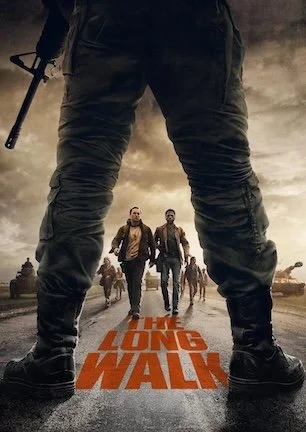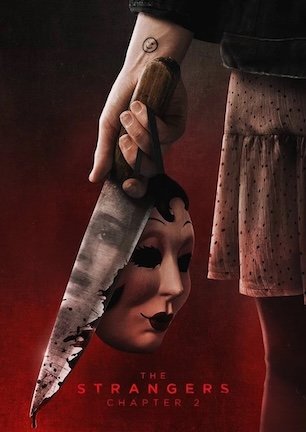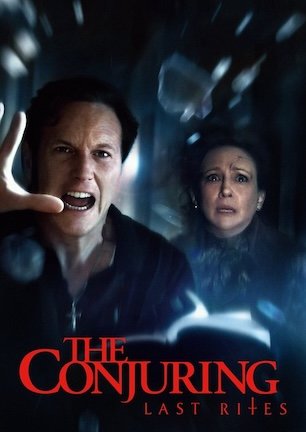Studio: Cauldron Films
Director: Michael Costanza
Writer: Michael Costanza
Producer: Michael Costanza
Stars: Stephanie Dees, Johnny Burton, Diane Behrens, Grant Edmonds, Glenn Hoeffner, Ron Ige
Review Score:
Summary:
While communicating with her long distance boyfriend, a college student uncovers an occult conspiracy connected to the off-campus home where she lives.
Review:
“The Collingswood Story,” a “found footage” film released in 2002, received a small bite of notoriety ten years later when its creator, Michael Costanza, sued Paramount Pictures and a pair of producers. Costanza contended that he presented content from “The Collingswood Story” during a pitch meeting in 2010 that ended with his concepts being turned down. In 2012 however, similar ideas turned up in “Paranormal Activity 4” (review here), prompting Costanza to suggest a court decide how much their movie might have copied his.
The case never made it to trial though. By 2014, Costanza told Dread Central his lawsuit had been “resolved amicably.” Costanza has yet to release another feature since “The Collingswood Story,” including his previously announced project “The Market Street 6” as well as a possible sequel teased at the time he announced the settlement. “Amicable” deals have a habit of replacing ambition with bankbook zeroes, I guess.
It’s a minor pity the movie has that asterisk over it since “The Collingswood Story” holds its own as a genuinely creepy, inventive indie from “found footage’s” heyday. At a time before FaceTime and Skype existed, and before films like “Open Windows” (review here) or “Unfriended” (review here) made such framing commonplace, “Collingswood” daringly crafted a narrative that plays out entirely over computer screens as characters communicate with one another remotely.
Techniques are hokey by contemporary standards. Try not to snicker at the movie’s graphic interface of blocky menus and outdated internet browser imagery. Today, audiences take for granted when one button press puts people in contact via cellphone cameras in under two seconds. In 2002, “The Collingswood Story” had to innovate explanations for making its videophones mobile by introducing comically long extension cords and forcing characters to download enormous email attachments because they couldn’t broadcast from a moving car. It may look laughable now, but this was creative thinking then.
“The Collingswood Story” sets up a long distance relationship between 21-year-old college student Rebecca, who goes to school in the titular New Jersey town, and her boyfriend John back in Virginia. Spatial separation becomes one of the movie’s main methods for manufacturing suspense. When eeriness ramps up, viewers vicariously feel the helplessness of being forced to watch something horrible happen because everyone exists in an isolated two-dimensional window. Again, horror movies have done this hundreds of times in the years since. Yet “Collingswood” effectively captures a sense of patient distress by removing any possibility of anyone taking action together.
Exclusively interacting via videophone cools the couple’s chemistry however. So does iffy characterization. Stephanie Dees plays Rebecca as a perky, talkative, booksmart coed. Meanwhile, Johnny Burton costumes John in a backwards baseball cap and mechanic’s shirt embroidered ironically with someone else’s name while swigging Mickey’s malt liquor during a video chat with Rebecca. Not only do they come off as romantically mismatched, their lukewarm side drama about John fearing possible infidelity doesn’t pay off with invested oomph either.
Then again, we learn Rebecca’s ex Billy, who remains John’s best friend, drinks beer from a novelty hat, uses the cans to build a decorative pyramid next to his Washington Redskins banner, and pulls down camo pants to moon John for a har-dee-har laugh. Maybe Rebecca just has terrible taste in men.
Dees and Burton’s performances warm up from stiffly amateur to acceptably adequate as the film rolls into more frightening material. At the same time, there’s ample evidence onscreen explaining why Burton never appeared in another movie and Dees’ only other notable credit is ‘Girl’ from 1988’s “Halloween 4: The Return of Michael Myers” (review here).
Rough edges generally contribute to the film’s appeal as a scrappy no-budget effort whose imaginative elbow grease is evident everywhere. Acting as editor in addition to writer and director, Mike Costanza has a solid sense of when to cut between John and Rebecca’s respective cameras. “The Collingswood Story” unspools through a hefty amount of exposition. Costanza’s timing keeps the tempo as tight as can be expected, which makes the movie reasonably snappy for a story heavily reliant on conversation.
Anticipation gradually builds through grisly background bits concerning an occult conspiracy and tragic murders, both of which connect to the historic house where Rebecca rents a room. Action doesn’t necessarily intensify, but atmosphere does. John DeBorde’s warping, bassy score inserts unsettling sounds into satanic suggestiveness to strike an intangibly unnerving chord. If only Costanza knew to turn down the volume on terrible background music of the “my friend’s band” variety, audio elements would escape complaints.
What it lacks in visual finesse, “The Collingswood Story” makes up for with simplified moodiness. It’s not a flashy film, yet it deserves consideration when discussing microbudget rarities that actually overcome limitations to earn legitimate scares. If you want a reason to irrationally flinch at noises in the crawlspace above your bedroom, watch “The Collingswood Story” alone at night.
Review Score: 75






It assumes everyone watching must be a dimwit too dense to understand how the most basic storytelling concepts work.